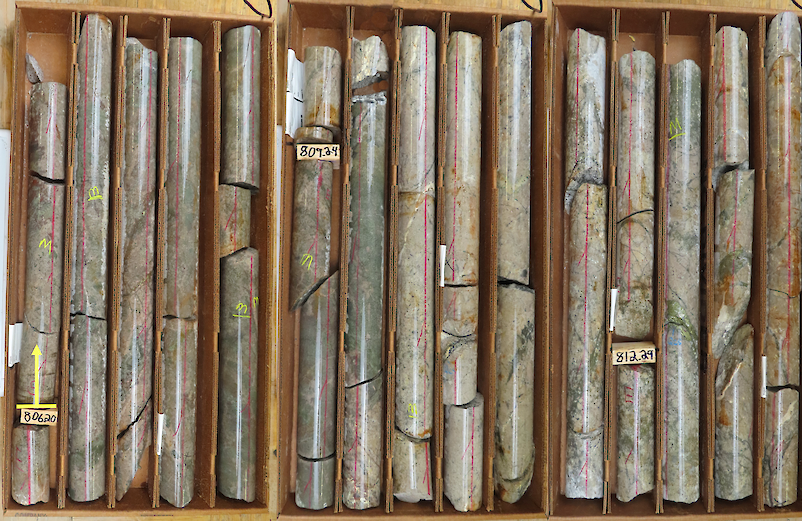Gold Vs. Miners: The Wrong Question, Part 2
Source: Adrian Ash, BullionVault (10/17/11)
"You don't need to be a mining-stockholder today to hope that maybe, just maybe, gold bullion might start slowing its outperformance of the gold miners soon."
You don't need to be a gold-mining investor to wish gold would stop outperforming them soon. . .
WHATEVER you think of the gold price right now, gold mining stocks are a raging buy. Everyone says so. There's rarely been this strong a consensus since England were all set to beat France in last weekend's Rugby World Cup.
Catch-up can't come too soon. Because lagging the gold price is fast becoming the norm, not the exception, for gold mining shares. Yes, that's contrary to both common sense and the relentless sales-pitch of brokers. But why? Here come the brokers, fund managers, executives and analysts to explain.
First, investment demand for mining stocks has been "cannibalized" by demand for gold, says the FT. Meaning "the guys who created the ETFs are now the losers," as it quotes Peter Munk, chairman and founder of Barrick—the world's biggest gold-mining producer, and so, ummm, one of the companies which backed the creation of the exchange-traded funds.
Gold-backed ETFs were first launched in 2003-2005. The aim was to sell gold to investors, who had gone missing-in-action as the price fell 75% over the 20 years to 2001. Most notably, U.S. mutual funds couldn't buy physical assets (and still can't). So a kind of reverse alchemy, turning real gold into exchange-traded paper, was developed. And the ETFs have certainly drawn a lot of investment dollars—$71.8 billion (B) of them at today's market value into world No.1, the New York-listed SPDR Gold Trust (GLD). Yet the big gold mining stocks can hardly complain. North America's four largest gold miners alone are worth nearly twice as much, some $133.5B today. The entire sector was valued at $100B six years ago just after the big GLD was launched. So it's not like mining equity has been shut out.
Gold miners have been hampered, however, by previous poor management. Over the 10 years to 2001, the gold mining industry worldwide sold forward—at current prices—a massive 3,200 tons of gold. Those sales, equal to more than 15 months' global output, began as a smart way of defending mining investors against gold's long bear market. Why wait to produce your next ounce, when you could sell it today for what would likely prove more?
Come the bull market, of course, stockholders proved very ungrateful. Or so runs the theory. But buying back that pre-sold metal at ever higher prices—to try and get even with the bull market in the very stuff they produce—meant raising cash (by raising debt or diluting stockholders with new shares), plus an immediate hit to the bottom line. Which might explain why, during this bull market so far, the gold mining sector performed best for investors when it was still carrying a mass of those forward sales, turning every 1% gain in gold into a 7% rise on the Amex Gold Bugs Index (HUI) between 2001 and 2006.
Since then, and running down the second half of its hedge book to pretty much zero, the miners have managed just 0.3% for every 1% rise in gold. That's despite having "full 100% upside to the gold price," as one chief financial officer declared on making a $4B loss, undoing the excessive caution of a decade before.
Such big hits to the bottom-line also worsened another problem for gold mining investors. The abject lack of a dividend. World Nos. 1 and 2 Barrick and Newmont, for instance, have managed just $7 per share between them—in total—since the mid-1980s. As an annual return on investment, neither has crept far north of 1% yield. The best-managed active equity funds have been substantially better, but a glance at total shareholder returns shows they're also fighting a deep undertow of slower gains as the gold price accelerates.
"Gold tends to be a 'safe haven' asset," says the sales pitch for UK fund BlackRock Gold & General, "and during periods of capital market volatility or political uncertainty its physical attributes become more highly valued." That's clearly true over the last four years of financial crisis and turmoil. But it's not any reason—by itself—to buy mining stocks instead.
Don't get us wrong. Blackrock Gold & General is rightly tipped as a great gold-mining fund. But just like the best U.S.-run gold funds, it's a very different beast to physical gold bullion. And just like them, its recent under-performance suggests that it's not output growth or gold demand forecasts that are driving the bull market. It's the opposite threat—the very clear risk of bank failures, default and the destruction of creditors—which are really moving gold prices higher. Buying shares in a producer or explorer sounds intuitive. A higher price means much greater profits—offering that famed leverage to the gold price. Their massive fixed costs mean a rising price-per-ounce should translate into faster-still growth in profits. But since the financial crisis broke, capital has switched to seeking protection, not growth. It doesn't help that mining stocks carry management, stock-market and geopolitical risk. And yes, easier exposure to gold itself has no doubt soaked up investment flows in the last five years—especially from institutional funds now able to track the gold price through exchange-traded trusts (ETFs)—just as top fund manager John Hathaway at Tocqueville Asset Management predicted in 2005.
Substitution is far from the main reason, however, that gold has been outperforming its miners. Northern Rock, Lehmans, the Greek deficit crisis. . .these are deflationary events by any measure—destroyers of money and credit, business investment and wage growth, however much the world's central banks print in response. Hence the flight into physical gold, outpacing the rush into mining producers in precisely the way it didn't before the financial crisis began. And so you don't need to be a mining-stockholder today to hope that maybe, just maybe, gold bullion might start slowing its outperformance of the gold miners soon.
Adrian Ash
Bullion Vault
Gold price chart, no delay | Buy gold online at live prices
Formerly City correspondent for The Daily Reckoning in London and head of editorial at the UK's leading financial advisory for private investors, Adrian Ash is head of research at BullionVault—winner of the Queen's Award for Enterprise Innovation, 2009 and now backed by the World Gold Council market-development and research body—where you can buy gold today vaulted in Zurich on $3 spreads and 0.8% dealing fees.
(c) BullionVault 2011
Please Note: This article is to inform your thinking, not lead it. Only you can decide the best place for your money, and any decision you make will put your money at risk. Information or data included here may have already been overtaken by events—and must be verified elsewhere—should you choose to act on it.
WHATEVER you think of the gold price right now, gold mining stocks are a raging buy. Everyone says so. There's rarely been this strong a consensus since England were all set to beat France in last weekend's Rugby World Cup.
Catch-up can't come too soon. Because lagging the gold price is fast becoming the norm, not the exception, for gold mining shares. Yes, that's contrary to both common sense and the relentless sales-pitch of brokers. But why? Here come the brokers, fund managers, executives and analysts to explain.
First, investment demand for mining stocks has been "cannibalized" by demand for gold, says the FT. Meaning "the guys who created the ETFs are now the losers," as it quotes Peter Munk, chairman and founder of Barrick—the world's biggest gold-mining producer, and so, ummm, one of the companies which backed the creation of the exchange-traded funds.
Gold-backed ETFs were first launched in 2003-2005. The aim was to sell gold to investors, who had gone missing-in-action as the price fell 75% over the 20 years to 2001. Most notably, U.S. mutual funds couldn't buy physical assets (and still can't). So a kind of reverse alchemy, turning real gold into exchange-traded paper, was developed. And the ETFs have certainly drawn a lot of investment dollars—$71.8 billion (B) of them at today's market value into world No.1, the New York-listed SPDR Gold Trust (GLD). Yet the big gold mining stocks can hardly complain. North America's four largest gold miners alone are worth nearly twice as much, some $133.5B today. The entire sector was valued at $100B six years ago just after the big GLD was launched. So it's not like mining equity has been shut out.
Gold miners have been hampered, however, by previous poor management. Over the 10 years to 2001, the gold mining industry worldwide sold forward—at current prices—a massive 3,200 tons of gold. Those sales, equal to more than 15 months' global output, began as a smart way of defending mining investors against gold's long bear market. Why wait to produce your next ounce, when you could sell it today for what would likely prove more?
Come the bull market, of course, stockholders proved very ungrateful. Or so runs the theory. But buying back that pre-sold metal at ever higher prices—to try and get even with the bull market in the very stuff they produce—meant raising cash (by raising debt or diluting stockholders with new shares), plus an immediate hit to the bottom line. Which might explain why, during this bull market so far, the gold mining sector performed best for investors when it was still carrying a mass of those forward sales, turning every 1% gain in gold into a 7% rise on the Amex Gold Bugs Index (HUI) between 2001 and 2006.
Since then, and running down the second half of its hedge book to pretty much zero, the miners have managed just 0.3% for every 1% rise in gold. That's despite having "full 100% upside to the gold price," as one chief financial officer declared on making a $4B loss, undoing the excessive caution of a decade before.
Such big hits to the bottom-line also worsened another problem for gold mining investors. The abject lack of a dividend. World Nos. 1 and 2 Barrick and Newmont, for instance, have managed just $7 per share between them—in total—since the mid-1980s. As an annual return on investment, neither has crept far north of 1% yield. The best-managed active equity funds have been substantially better, but a glance at total shareholder returns shows they're also fighting a deep undertow of slower gains as the gold price accelerates.
"Gold tends to be a 'safe haven' asset," says the sales pitch for UK fund BlackRock Gold & General, "and during periods of capital market volatility or political uncertainty its physical attributes become more highly valued." That's clearly true over the last four years of financial crisis and turmoil. But it's not any reason—by itself—to buy mining stocks instead.
Don't get us wrong. Blackrock Gold & General is rightly tipped as a great gold-mining fund. But just like the best U.S.-run gold funds, it's a very different beast to physical gold bullion. And just like them, its recent under-performance suggests that it's not output growth or gold demand forecasts that are driving the bull market. It's the opposite threat—the very clear risk of bank failures, default and the destruction of creditors—which are really moving gold prices higher. Buying shares in a producer or explorer sounds intuitive. A higher price means much greater profits—offering that famed leverage to the gold price. Their massive fixed costs mean a rising price-per-ounce should translate into faster-still growth in profits. But since the financial crisis broke, capital has switched to seeking protection, not growth. It doesn't help that mining stocks carry management, stock-market and geopolitical risk. And yes, easier exposure to gold itself has no doubt soaked up investment flows in the last five years—especially from institutional funds now able to track the gold price through exchange-traded trusts (ETFs)—just as top fund manager John Hathaway at Tocqueville Asset Management predicted in 2005.
Substitution is far from the main reason, however, that gold has been outperforming its miners. Northern Rock, Lehmans, the Greek deficit crisis. . .these are deflationary events by any measure—destroyers of money and credit, business investment and wage growth, however much the world's central banks print in response. Hence the flight into physical gold, outpacing the rush into mining producers in precisely the way it didn't before the financial crisis began. And so you don't need to be a mining-stockholder today to hope that maybe, just maybe, gold bullion might start slowing its outperformance of the gold miners soon.
Adrian Ash
Bullion Vault
Gold price chart, no delay | Buy gold online at live prices
Formerly City correspondent for The Daily Reckoning in London and head of editorial at the UK's leading financial advisory for private investors, Adrian Ash is head of research at BullionVault—winner of the Queen's Award for Enterprise Innovation, 2009 and now backed by the World Gold Council market-development and research body—where you can buy gold today vaulted in Zurich on $3 spreads and 0.8% dealing fees.
(c) BullionVault 2011
Please Note: This article is to inform your thinking, not lead it. Only you can decide the best place for your money, and any decision you make will put your money at risk. Information or data included here may have already been overtaken by events—and must be verified elsewhere—should you choose to act on it.



































